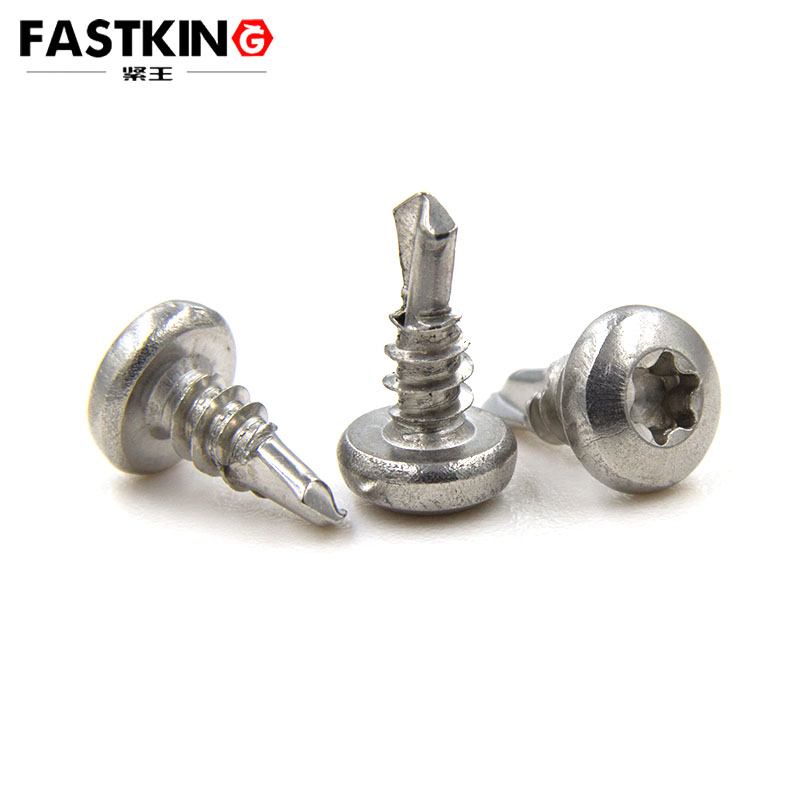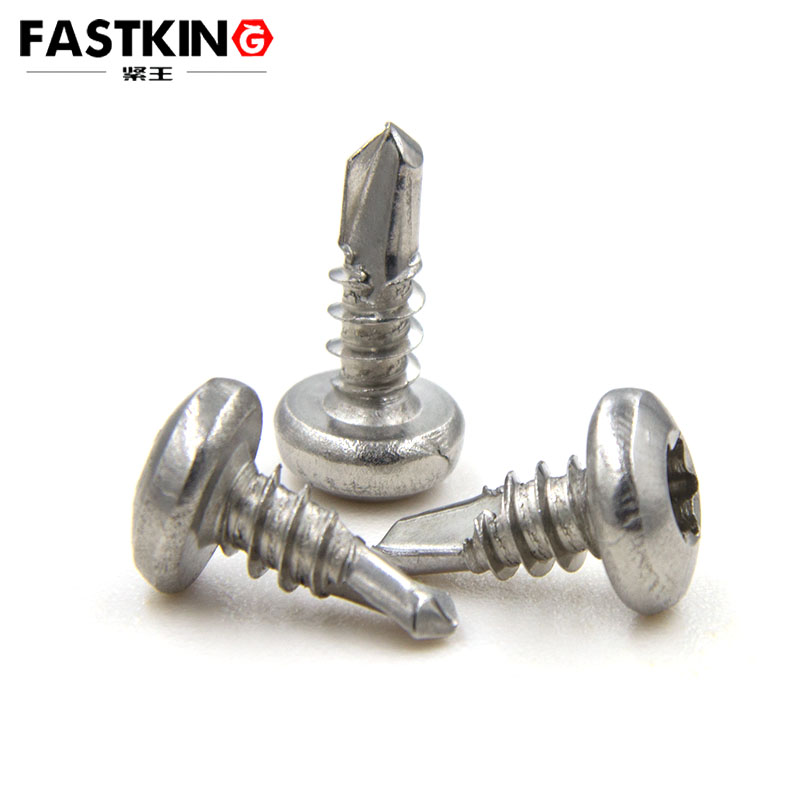- Torx screw,torx machine screw,torx self tapping screw
- sales@jlfastener.com
Pan-Head Inner Socket Drill-Point Screws: An Innovative Solution for Efficient Connection
Pan-Head Inner Socket Drill-Point Screws: An Innovative Solution for Efficient Connection
The structural design of Pan-Head Inner Socket Drill-Point Screws embodies an innovative concept of functional integration. The pan-head design provides a large load-bearing area, enabling more uniform pressure distribution. It is suitable for thin-plate connection scenarios and avoids the problem of plate depression that may be caused by countersunk screws. The head adopts an inner socket slot driving structure, which has better torque transmission capacity compared with traditional cross slots, and its anti-thread-stripping performance is significantly improved. When used with a dedicated socket wrench, it can achieve precise torque control. The most core innovation lies in the drill-point design at the tail, which integrates the dual functions of a drill bit and a tap: the tip is in the shape of a drill bit for drilling, and the subsequent thread section completes tapping simultaneously, realizing the integrated operation of "drilling, tapping, and tightening".
Material selection needs to balance the requirements of strength and processability. High-quality Pan-Head Inner Socket Drill-Point Screws are mostly made of 1022 low-carbon steel or 410 stainless steel. After carburizing and quenching, 1022 steel has a surface hardness of 55-60HRC, while the core maintains a certain toughness. This not only ensures the cutting ability of the drill point but also prevents brittle fracture during use, making it suitable for connecting ordinary steel materials. 410 stainless steel has good corrosion resistance and medium strength; after quenching and tempering, it can meet the connection needs in humid environments and is often used in outdoor facilities or home appliance products. For high-strength connection scenarios, alloy steel materials can also be selected, and higher comprehensive mechanical properties can be obtained by adjusting the alloy composition.

The manufacturing process plays a decisive role in product performance. The cold heading forming process is used for the preliminary forming of the head and shank, which can maintain the continuity of metal fibers and improve material utilization and production efficiency. Drill-point processing is a key process: special tools are required to accurately process the drill bit angle (usually 90°-120°) and cutting edges to ensure stable and efficient drilling. Thread processing adopts the rolling process, which not only improves thread strength but also forms a smooth thread surface, reducing friction resistance during assembly. The heat treatment process requires local quenching technology: the drill point and thread part obtain high hardness, while the head maintains relatively low hardness to avoid cracking during driving. This differentiated heat treatment ensures the optimal performance of each part.
The surface treatment process should be designed according to the application environment. For general scenarios, electro-galvanizing treatment can be used, with the coating thickness controlled at 8-12μm, and a basic anti-corrosion layer is formed with passivation treatment. For outdoor high-corrosion environments, hot-dip galvanizing treatment should be adopted, with the coating thickness reaching more than 60μm, significantly improving weather resistance. Nickel plating is often used in home appliance products, which is not only aesthetically pleasing but also has good electrical conductivity. For special anti-corrosion needs, Dacromet coating can be used, which has excellent salt spray resistance and is suitable for applications in coastal or chemical environments. After surface treatment, the inner socket slot must be kept clean and free of residues to avoid affecting the driving effect.
The application of Pan-Head Inner Socket Drill-Point Screws has clear technical specifications. Before assembly, the appropriate specification of the screw should be selected according to the thickness of the connected material; generally, the screw length should exceed 1.5-2 times the total thickness of the connected parts. During the drilling stage, vertical feeding should be maintained to avoid poor thread fit caused by inclination. When driving, a matching inner socket wrench should be used to ensure uniform torque transmission; it is recommended to use an electric screwdriver and set a reasonable rotation speed (usually 300-500r/min). Excessively high speed may cause overheating and wear, while excessively low speed affects efficiency. For plates with a thickness of more than 3mm, it is recommended to pre-drill a guide hole first to reduce the load on the drill point and extend its service life.
In typical application scenarios, this screw shows significant advantages. In building curtain wall installation, its efficient drilling ability can directly connect aluminum alloy profiles and steel structures, greatly shortening the construction period; during home appliance shell assembly, the pan-head design ensures surface flatness, and the anti-disassembly feature of the inner socket slot also improves product safety; stainless steel versions of this screw are used for connecting auto chassis accessories, which can adapt to anti-corrosion needs under complex working conditions. Especially in field operations or mobile construction, there is no need to carry auxiliary tools such as drill bits and taps—only a screwdriver is needed to complete the connection, significantly improving operation convenience.
The quality inspection system needs to cover the entire production process. Dimension inspection focuses on controlling thread precision, drill-point angle, and head size, and image measuring instruments are used to achieve precise measurement. Mechanical performance inspection includes tensile strength, breaking torque, and driving-in performance tests; the screw is required to successfully complete the drilling and tapping process in the specified plate without jamming or breaking. Coating quality inspection verifies anti-corrosion performance through salt spray tests: ordinary galvanized products need to pass a 48-hour salt spray test, while stainless steel products need to pass a test of more than 120 hours. In addition, a torque-angle test is also required to ensure the driving reliability of the inner socket slot.

Pan-Head Inner Socket Drill-Point Screws simplify the connection process through structural innovation, and their design concept represents the development trend of fasteners towards multi-functional integration. As the manufacturing industry continues to increase its requirements for production efficiency, this innovative fastener that integrates drilling, tapping, and fastening will replace traditional connection solutions in more fields, providing efficient and reliable technical support for industrial assembly.

